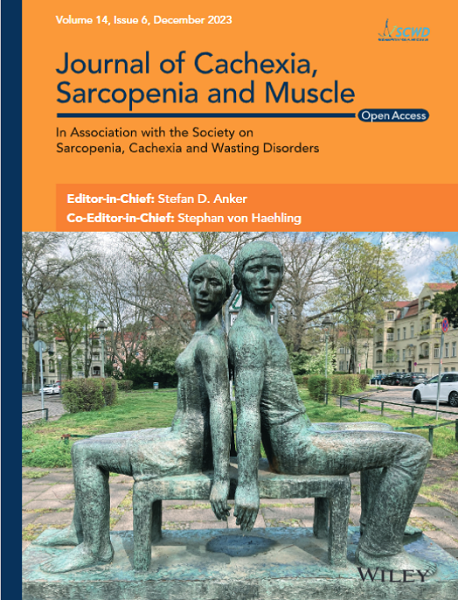C-Terminal Agrin Fragment as a Biomarker for Sarcopenia: A Systematic Review and Meta-Analysis
Abstract
Background
Sarcopenia is a gradual decline in skeletal muscle mass and strength, which eventually leads to reduced physical performance. 50% of people aged 60–80 years suffer from sarcopenia. Considering the devastating outcomes and the importance of promoting healthy ageing, the diagnosis and prevention of sarcopenia is of utmost importance. Recently, C-terminal agrin fragment (CAF) has been identified as an indicator for early diagnosis of sarcopenia. So far, systematic reviews demonstrating CAF as a biomarker for sarcopenia have been conducted, but a meta-analysis is still needed. This study contains systematic review as well as detailed meta-analysis to better understand the association of CAF and sarcopenia.
Methods
Articles were primarily obtained from four different databases. Studies demonstrating the association between CAF and sarcopenia were selected. Data extraction and analysis were performed using STATASE 16 software. The risk of bias and quality assessment of each study was carried out using Joanna Briggs Institute (JBI) Critical Appraisal Tool. Meta-regression, subgroup and sensitivity analysis were conducted to identify the source of heterogeneity.
Results
Seventeen studies were included in the qualitative analysis, out of which 10 were included in the quantitative analysis. The meta-analysis showed that CAF levels were significantly higher in sarcopenia patients, with an effect size of 1.93 (ROM = 1.93, 95% CI [1.49 to 2.36]; p = 0.00) and 1.38 (ROM = 1.38, 95% CI [0.94 to 1.83], p = 0.00) when compared with non-sarcopenic and non-sarcopenic (other co-morbidities) group, respectively. CAF levels were also negatively associated with hand grip strength (HGS) and skeletal muscle index (SMI) with an effect size of 1.09 (ROM = 1.09 with 95% CI [1.05 to 1.13], p = 0.00) and 1.10 (ROM = 1.10 with 95% CI [1.05 to 1.14], p = 0.00), respectively. Meta-regression and subgroup analysis revealed that although sarcopenia is associated with increasing age, the correlation between CAF and age was statistically insignificant (p = 0.44), suggesting that the variation of age among sarcopenia patients could be source of heterogeneity among studies. All the studies included in the meta-analysis reported low risk of bias.
Conclusions
Our meta-analysis concluded that elevated CAF levels were associated with sarcopenia and decreased HGS and SMI. CAF could serve as a valuable marker for the early detection and monitoring of sarcopenia, ultimately facilitating the management and treatment of this debilitating condition.


 求助内容:
求助内容: 应助结果提醒方式:
应助结果提醒方式:


